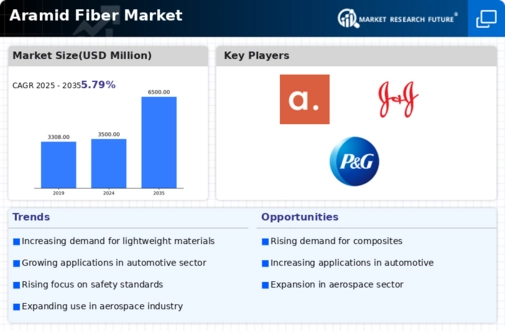Top Industry Leaders in the Aramid Fiber Market

Aramid fibers, renowned for their exceptional strength, heat resistance, and lightweight nature, have carved a niche in diverse industries. From bulletproof vests to aerospace components, their applications are as varied as their properties. However, navigating this competitive landscape demands a closer look at the key players, their strategies, and the factors shaping market share.
Competitive Strategies: Weaving a Web of Success
-
Product Differentiation: Established players like DuPont (Kevlar®) and Teijin Limited (Twaron®) dominate the market with their well-known brands. However, smaller players like Kolon Industries Inc. (Technora®) and Yantai Tayho Advanced Materials Co. Ltd. are carving their niche through specialized offerings like high-performance or cost-effective aramid variants.
-
Vertical Integration: To gain control over the entire value chain, companies like DuPont and Hyosung Corporation are investing in upstream production of raw materials like p-phenylenediamine. This ensures supply chain stability and cost competitiveness.
-
Regional Focus: Recognizing the booming demand in Asia-Pacific, particularly China, companies are establishing production facilities and forging strategic partnerships in the region. This localization caters to specific market needs and reduces logistics costs.
-
Research and Development: Innovation is paramount in this high-tech market. Companies are actively investing in R&D to develop new aramid formulations with improved properties like enhanced flame retardancy or electrical conductivity. This opens doors to new applications and market segments.
-
Sustainability Push: Environmental concerns are gaining traction. Companies are exploring bio-based raw materials and eco-friendly production processes to reduce the environmental footprint of aramid fibers. This resonates with sustainability-conscious consumers and industries.
Factors Shaping Market Share: The Threads of Dominance
-
Product Type: Para-aramid fibers, with their superior strength and ballistic properties, hold the largest market share, followed by meta-aramid fibers offering better heat resistance. The choice depends on the specific application requirements.
-
Application: The aerospace and defense industries are major consumers of aramid fibers for lightweight and high-strength composites. However, the rising demand for protective clothing and automotive applications is diversifying the market.
-
Geographical Distribution: Asia-Pacific, driven by China's rapid industrialization and growing defense budget, is the largest market. Europe and North America follow, with their established aerospace and automotive industries.
-
Pricing and Cost: Aramid fibers are premium materials, and their price fluctuates based on raw material costs, production complexities, and brand reputation. Finding the right balance between cost and performance is crucial for market share.
Key Players
Some of the manufacturers operating in the global aramid fiber market are TEIJIN LIMITED (Japan), Yantai Tayho Advanced Materials Co., Ltd (China), HYOSUNG (South Korea), Toray Chemicals Korea Inc. (South Korea), KERMEL (France), Kolon Industries, Inc. (South Korea), Huvis (South Korea), China National Bluestar (Group) Co. Ltd. (China), SRO Aramid (Jiangzu) Co., Ltd. (China), and IBIDEN CO., LTD. (Japan).
Recent Developments:
August 2023: Teijin Aramid, a major player in the aramid fiber industry, announces the completion of its production capacity expansion program in the Netherlands, increasing capacity by 25%. This move aims to meet the rising demand for aramid fibers globally.
December 2023: DuPont and Kolon Industries Inc. partner to develop aramid-based fire-resistant insulation for buildings, targeting the construction sector.
January 2024: The European Union announces plans to invest in research and development of next-generation aramid fibers for use in renewable energy applications.

